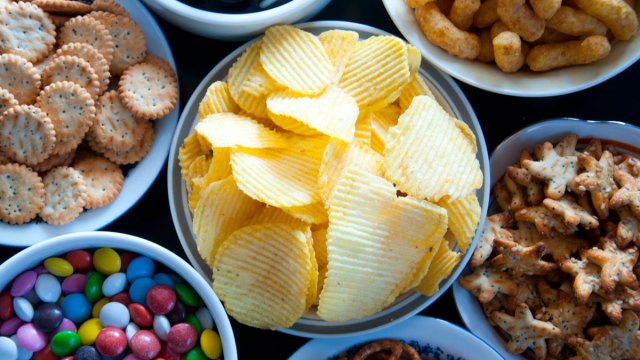In my house, you can always find fresh fruit and vegetables, eggs, tofu, olive oil, and at least three kinds of whole grains—usually farro, quinoa, and oats. You will also find several pounds of chocolate chips; at least two bags of tortilla chips; a big jar of that ultra-sweet, ultra-creamy store-bought peanut butter; as many as half a dozen boxes of sweetened, multi-colored breakfast cereal (some with marshmallows); and boxed macaroni-and-cheese.
If I had to guess, most people would view that initial list more positively than the second. However, the idea that the whole foods I mentioned first are “good” and the processed options are “bad” is one that I reject out of hand, a radical outlook that can be described as “food neutrality.” Pediatric nutritionist Sarah Remmer describes it like this:
Food neutrality is not saying that all foods have the same nutrition. Food neutrality essentially means that we as parents are removing the moral value. That means dropping labels like “good,” “bad,” “healthy,” “unhealthy,” “junk,” “red light,” “green light,” or even “sometimes food,” and just calling foods by their name: “carrots,” “jelly beans,” “cupcake,” “chicken” etc.
If that sounds hard, you’re not alone. Parents today were raised in an era that valued slim bodies and was devoid of body positivity, one in which we were always getting the message that certain foods were “bad” and would make you “fat.” It’s no wonder, then, that when we set out to raise our own children, many of us wanted to do things differently: to teach them how to listen to their bodies, to manage the messaging better, and to avoid instilling in them the same hang-ups we had. But how?
Related: I’m Embracing My Body for My Daughter’s Sake
If you take away our emotional responses, the truth is that both types of foods listed above are providing our bodies with fuel for growing and moving through the world. They can delight us; offer convenience, flavors, and textures we like; and evoke happy memories.
I learned this through my children. With my first child, it was pretty easy; I offered food, and she was enthusiastic about everything, like fresh pears and the packaged, peach-flavored hot cereal I made her each morning.
But when her little sister was born with a host of medical issues around eating and swallowing, feeding her anything was a challenge. She preferred fresh fruits and vegetables, but she wasn’t growing; she needed sources of fat and protein that worked with her own body’s limitations. At one point, the best way to keep her from needing a feeding tube was to entice her to eat a cupcake before her blueberries.
Suddenly, food neutrality made a lot of sense. The cupcake wasn’t “bad,” and the blueberries weren’t “good;” she needed the cupcake more than the blueberries—even if she liked blueberries more. Her sister, though, would have eaten cupcakes until she had a stomach ache if we let her.
My daughters needed both foods for different reasons: pleasure and nutrition. If the same food offered mostly pleasure to one and mostly nutrition to the other, then the value was in the usefulness to each child, not some universal merit system. Foods aren’t good or bad; they just are.
Parents can model this in many ways. For one, we can gently correct the value-weighted language we hear from others in our kids’ lives, pointing out when someone says a certain food is “junk” that it’s also delicious. We can remember to talk to our kids about the many foods we love using the same language no matter how the world sees them, sharing our excitement about sweet corn season and the ice cream truck.
We can follow thinkers like Virginia Sole-Smith, who writes about children and diet culture, or Jessica Jones and Wendy Lopez, who headline the Dear Media podcast about intuitive eating. We can stop making dessert a reward for eating broccoli and also examine how our own eating patterns have been informed by the false narrative that food has moral value—which will be as good for us as it is for our kids.
So here’s the only major rule I have about food: Eat what your body needs and what your taste buds want. Brussels sprouts are delicious and so are nachos. We feed our bellies, but we also eat with our eyes and souls. Tonight, dinner might be a frittata if we have time to cook or a take-out pizza if we don’t. Each week, we have a justifiable need for both.











